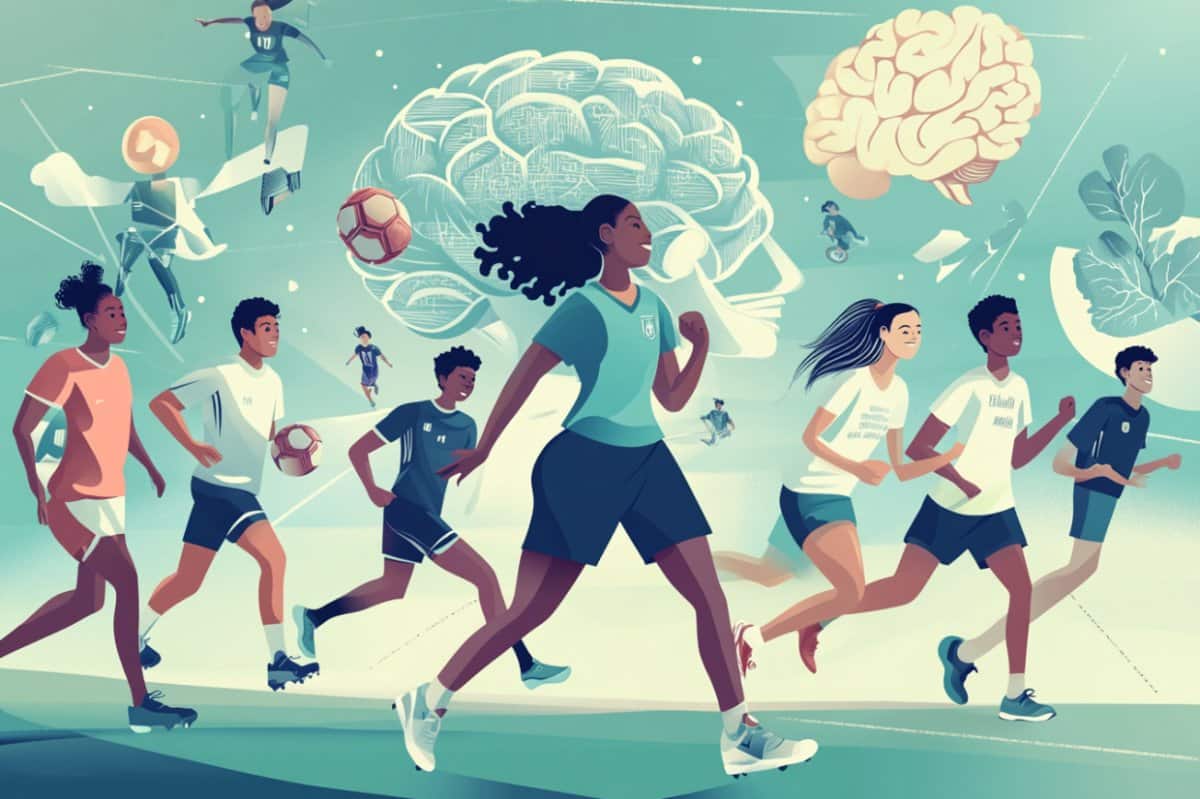Summary: A new study of Japanese undergraduates finds that students’ perceptions of their own athletic ability are shaped by a mix of personality traits, childhood environment, and social feedback. Those who rated themselves as more athletic also tended to display grit, resilience, and a growth mindset.
Factors like early walking age, athletic parents, frequent sports participation, and being called athletic by others were also linked to higher self-ratings. Interestingly, youngest siblings were more likely to see themselves as athletic, possibly due to mimicking older siblings.
Key Facts:
- Psychological Traits: Grit, resilience, and growth mindset were strong predictors of perceived athletic ability.
- Family Influence: Youngest siblings and those with athletic parents were more likely to rate themselves as athletic.
- Social Feedback: Being labeled athletic by others correlated with higher self-perception, suggesting external affirmation matters.
Source: PLOS
In a new study of college undergraduates in Japan, the students’ self-perception of their own athletic ability was linked with several internal and external factors, such as personality traits, family characteristics, leisure activities, and others’ perceptions.
Sho Ito of Nanzan University, Japan, and colleagues present these findings in the open-access journal PLOS One on May 28, 2025.

Self-perception of one’s own athletic ability could influence one’s motivation to engage in physical activity. For young people, the sense of one’s own athleticism may affect their participation in sports and other physical activities, which could, in turn, have implications for health and academic achievement.
However, while people often refer to others’ “athletic ability,” this term’s definition is vague. Furthermore, research on the underlying factors associated with self-perception of one’s own athletic ability has been limited.
To help clarify, Ito and colleagues investigated self-perception of athletic ability among 406 undergraduate students, who each completed a questionnaire evaluating their sense of their own physical capability across 11 different sports disciplines, such as soccer, volleyball, and basketball.
The students also completed assessments of personality, family background, and history of physical activity.
Statistical analysis of the responses revealed that students who perceived themselves as having higher overall athletic ability tended to also score higher for the personality traits of grit, resilience, and a growth mindset.
These students were also more likely to be youngest siblings, to be frequently called “athletic” by others, to have first walked at an earlier age, and to have more prior sports experience, athletic parents, and a higher parental household income.
Meanwhile, they were less likely to engage in certain leisure activities, such as games and music.
These findings could help lead to a deeper understanding of factors influencing athletic ability, which could also help establish a more precise definition of the term.
However, this study does not confirm any cause-effect relationships, and the authors note that additional research is needed to clarify how the factors identified in this study are related to development of self-perception of athletic ability.
The authors add: “Our study shows that subjective perceptions of athletic ability are shaped not only by personality traits and sports experience, but also by early childhood environments and family background.
“We were particularly surprised to find that the youngest siblings reported higher perceived athletic ability—perhaps because they often imitate older siblings.”
Funding: We would like to express our sincere gratitude to the Nanzan University Pache Research Subsidy I-A-2 for the 2024 academic year and JSPS KAKENHI Grant Number JP23K10623 for funding this research. 1 Initials of the authors who received each award; Kouki Kato Grant numbers awarded to each author ; JP23K10623.
The full name of each funder: Japan Society for the Promotion of Science URL of each funder website; https://www.jsps.go.jp/j-grantsinaid/ 2 Initials of the authors who received each award; Kouki Kato Grant numbers awarded to each author ; Nanzan University Pache Research Subsidy I-A-2 for the 2024 academic year.
The full name of each funder: Nanzan University URL of each funder website; https://www.nanzan-u.ac.jp/
About this perception and personality research news
Author: Hanna Abdallah
Source: PLOS
Contact: Hanna Abdallah – PLOS
Image: The image is credited to Neuroscience News
Original Research: Open access.
“Determinants of subjective total athletic ability” by Sho Ito et al. PLOS One
Abstract
Determinants of subjective total athletic ability
The term “good motor skill” is often discussed in everyday contexts and when observing sports; however, its definition remains elusive, and the associated factors are not well understood.
Therefore, in this cross-sectional study, we investigated the determinants of subjective total athletic ability, defined as the sum of subjective athletic abilities across 11 sports disciplines.
A sample of 406 undergraduate students completed a questionnaire to evaluate their perceived athletic prowess in various sports, as well as assessments of their personality traits, family background, and sports performance.
The analysis revealed correlations between the perceived general athletic ability and specific abilities in soccer, volleyball, basketball, and short-distance racing.
Furthermore, linear model analyses indicated a positive association between perceived total athletic ability and personal characteristics such as grit, resilience, and a growth mindset.
Factors such as recreational activities in elementary school, sibling structure, prior athletic experience, parental athletic ability, family income, external evaluations of motor skills, and age at first walking also appeared to influence perceived total athletic ability.
These results imply that a blend of internal and external factors may shape subjective athletic ability.
However, future studies should investigate the causal connections among these factors to deepen our understanding of the concept and its influencers.






